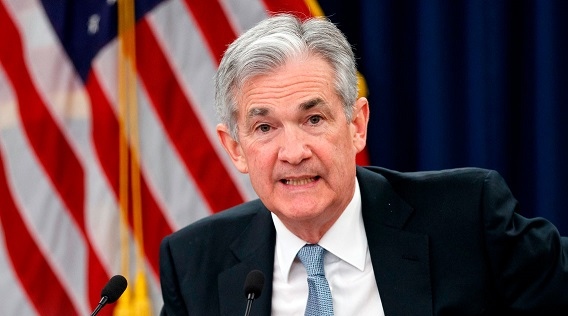US Federal reserve hikes interest rates
September 29, 2018 | Expert Insights

It raised US short-term interest rates for a third time this year and signalled it will forge ahead with plans to tighten policy.
The interest rate hike comes despite the US being locked in a trade war with China.
Background
The Federal Reserve System (also known as the Federal Reserve or simply the Fed) is the central banking system of the United States. It was created on December 23, 1913. The main goal behind establishing the body was to create a central control of the monetary system that will prevent financial crises. In the event of a financial downturn, the Federal Reserve steps in to provide key aid.
Over the years, the Federal Reserve a played a key role in saving the American economy (and in turn the global economy) from imploding. It’s roles and responsibilities were expanded after the Great Depression, that caused a global meltdown. The timing of the Great Depression varied across nations; in most countries it started in 1929 and lasted until 1941. It resulted in international trade being reduced by 50% and unemployment rose.
A rise in the Fed funds rate will likely cause a ripple effect on the borrowing costs for consumers and businesses that want to access credit based on the U.S. dollar. Whenever the Federal Reserve increases the interest rates, the prime rate increases, and the credit card rates also increases among others. A hike in interest rates boosts the borrowing costs for the U.S. government and fuel an increase in the national debt.
Analysis
The Federal Open Market Committee boosted the target range for its key rate by another quarter percentage point to 2-2.25 per cent, in the eighth rate rise of the current cycle, while teeing up a further increase in December.
The central bank dropped previous assurances that policy was “accommodative” as it reduces the economic stimulus it put in place during the crisis. Median forecasts for interest rates released by the Fed’s policymakers pointed to one more rise this year, followed by three increases in 2019 and another in 2020 — in line with previous expectations.
In a press conference, Jay Powell, Fed chairman, struck an upbeat tone about US economic performance. “Our economy is strong, growth is running at a healthy clip, unemployment is low, the number of people working is rising steadily, and wages are up,” he said. “Inflation is low and stable. All of these are very good signs.”
While there had been a “rising chorus” of concerns about trade from companies around the country, it was hard to discern any impact on the aggregate performance of the US economy, Mr Powell added.
It was possible that tariffs could be passed on to consumers through prices, but there was no evidence in the data. “We are not seeing it yet — we just aren’t,” he said. “And we are watching it very carefully.”
The Fed is on course for tighter monetary policy as unemployment heads toward multi-decade lows, wage growth accelerates to its quickest pace in nine years, and estimates point to annualised third-quarter growth of more than 4 per cent.
Counterpoint
The US Federal Reserve has made no mention of President Donald Trump’s decision this month to impose tariffs on another $200bn of Chinese imports. The announcement has dented confidence among some US businesses and a rate hike may have negative impacts on US macroeconomic indicators.
The prospect of rates reaching neutral levels — those that neither boost the economy nor hold it back — has opened up a debate over the extent to which officials want to clamp down on the economy by increasing them further.
Assessment
Our assessment is that the strong economic growth along with a drop in the unemployment rate in the US has provided confidence to investors and equity markets have risen as a result. However, the trade war is yet to impact the US on a macro-scale. We believe in 2018, the Federal Reserve will hike the interest rates to 2%.








Comments